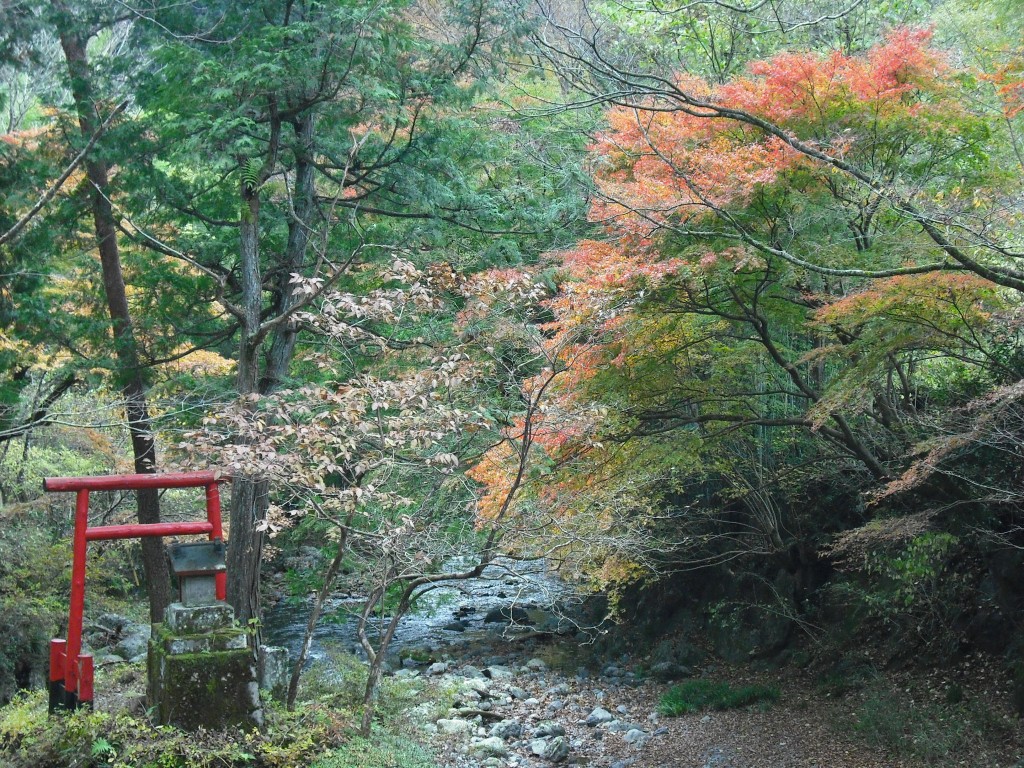Shinto’s potential as a green philosophy could be the decisive factor in its spread to the West. The rising interest in pantheism and paganism is driven by environmental concerns and a yearning for greater reverence for nature.  Even as we speak, the earth is being wrecked and ruined by human greed, and the present generation stands guilty. ‘What did you do in the war, daddy?’ is going to be overshadowed in future by the more accusatory, ‘Why didn’t you do anything to stop it?’
Even as we speak, the earth is being wrecked and ruined by human greed, and the present generation stands guilty. ‘What did you do in the war, daddy?’ is going to be overshadowed in future by the more accusatory, ‘Why didn’t you do anything to stop it?’
Recently I have been heartened by one or two striking examples of Shinto trying to assert green credentials. One is a publication by Jinja Honcho entitled ‘Nature is Divine’. It includes a section on Environmental Preservation.
However, it is simple-minded to think that Shinto is in itself a ‘green religion’ any more than, say, Christianity. I think religion in this respect is like a tool which can be used for good or bad. In Shinto for instance it is customary to show reverence for the kami when cutting down trees and breaking land for development. In other words you could see Shinto as sanctioning the development. Perhaps it is not coincidental then that the Japanese in recent times have been one of the most ‘development-driven’ nations on earth.
In his book Dogs and Demons (2002), Alex Kerr has detailed the environmental destruction in the ‘land of the  kami’. A country the size of California uses in one year ten times as much concrete as the whole of the US!! It takes some thinking about and explains why every major river except one has been damned, why the sides and bottoms of many rivers are concreted, why 60% of Japan’s huge coastline has been shored up by concrete blocks, why whole mountains have been cut down for gravel, why public works construction mar much of the countryside, and why the construction industry in Japan is so powerful that some say it runs the country (in the 1990s over 12% were engaged in construction compared with 3 or 4% of the population in other countries).
kami’. A country the size of California uses in one year ten times as much concrete as the whole of the US!! It takes some thinking about and explains why every major river except one has been damned, why the sides and bottoms of many rivers are concreted, why 60% of Japan’s huge coastline has been shored up by concrete blocks, why whole mountains have been cut down for gravel, why public works construction mar much of the countryside, and why the construction industry in Japan is so powerful that some say it runs the country (in the 1990s over 12% were engaged in construction compared with 3 or 4% of the population in other countries).
I say all this because I think it is necessary to struggle for green values rather than think that Shinto will do it for us. The alignment of Shinto in Japan with the right-wing is well-known; however there is no reason why that should continue for ever. And there is certainly no reason why that should be the case with the emerging forms of ‘international Shinto’.
Interestingly, I noticed that Kibune Shrine just outside Kyoto states in its shrine literature: ‘It is a shame
that Japanese people seem to have lost their appreciation and respect for nature. Isn’t it time for the people of Japan to reclaim this special ‘Japanese spirit’ that was previously exhibited long ago? It is the hope of Kifune Shrine people all over the world will become aware of this ‘Japanese spirit’ and once again become involved in protecting our precious environment.’
It is the hope of Green Shinto that human beings in general, and not just Japanese, will once again become involved in protecting our precious environment.


Leave a Reply